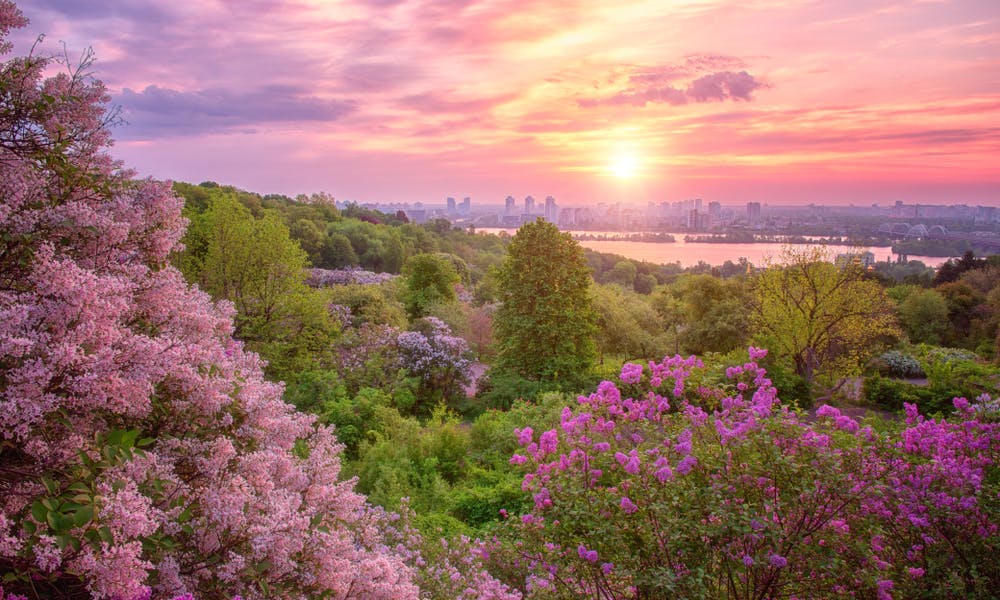A botanical garden is an area developed by a public, private, or associative institution that aims to present plant species and varieties. The numerous species and varieties of wild and horticultural plants are strictly identified and gathered in collections. They are cultivated and studied for four main objectives: conservation, scientific research, education, and teaching while remaining compatible with tourism. Worldwide, the most important botanical gardens, in area and size of the collection, are the Royal Botanical Gardens of Kew followed by the Montreal Botanical Garden.
By its structure, it is a planted space with easy access for the public. Therefore, it is a park where it is possible to walk, relax and breathe cleaner air than elsewhere in the city. It can also have a simple recreational function. However, it should be noted that unlike a city park where we can play at our ease, the botanical garden often contains protected species and plants that may be toxic or aggressive.
In this article, we are going to discuss the following points:
* The main role of a botanical garden
* The conservation and research aspect of a botanical garden
* How this garden participates in education and tourism?
* Few pieces of advice to make your botanical garden
The Main Role of a Botanical Garden
The main function of a botanical garden is to allow an audience to see and learn about plants. It is a cultural role. We can see the name of the plants, both the scientific and the vernacular names in local languages. You can also learn their use, which can be ornamental, medicinal, food, technical or scientific. While the ornamental character of the plants is immediately visible, other uses must be indicated to the public.
Therefore, a botanical garden must provide correct information. For that, they use labels positioned near the plants. They publish a descriptive brochure or even make a room for films or slide shows. Possible toxicity is a characteristic that must imperatively be indicated on the spot. This information especially concerns exotic plants, which the public only sees for the first time in the botanical garden, but also native plants, which people usually see but do not know anything about them.
The Conservation and Research Aspect of a Botanical Garden
One of the tasks of the botanical garden is the collection, study, and conservation of plants, either local or exotic. It is also used to protect endangered species from extinction. The Convention on International Trade in Endangered Species of Wild Fauna and Flora allow botanical gardens to be a source of some species.
Botanical gardens also carry out scientific work. This includes taxonomy, the study of botany but also the adaptation of exotic species outside their native environment. Often these institutions are also the place where all the knowledge about plants is formed. The information collected as well as studies carried out on new species can be used in agriculture, industry or medical research. At the beginning of the 21st century, several botanical gardens directed their work in the field of ecology and the study of relationships between living things.
How This Garden Participates in Education and Tourism?
The botanical garden also has an educational function. The first one is the presentation of a collection full of labeled plants to help teach systematics, and then projects ranging from the introduction of new plants in a foreign environment, gardening lessons, or the hosting of school groups. Many botanical gardens also offer plants for sale. For example, the Chicago Botanical Garden has established plant breeding programs and is bringing new species to the market.
At the local level, a botanical garden plays the role of a public garden, which gives the visitor the pleasure of a place set back from the urban norm. Tourism brings a dimension that generally interests donors and political leaders who are likely to encourage and provide support to this structure. Green tourism, or ecotourism, nowadays, seems better suited to botanical gardens that defend an ecological vocation and to institutions that stand for biodiversity and heritage values.
Few Pieces of Advice to Make Your Botanical Garden
A botanical garden must be landscaped according to the principles of respect and integration into the environment. You need to choose natural methods such as mulching and household compost. We especially advise you not to use pesticides or herbicides.
In addition, you need to gather the right conditions to grow your plants. Rare plants are most often fragile. Basic conditions for carrying out your small botanical garden project are to drain the soil and control the exposure to the sun and protect your plants from the wind. The plants, shrubs, or trees that you like to gather must be able to acclimatize to your region. Preferably, choose native plants, which have been or are still common in your region, or species from distant regions but with a comparable climate.
A botanical garden is dedicated to collection, cultivation, and presentation of a wide range of plants labeled with their botanical taxa and vernacular names. The botanical garden may contain collections of specialized plants such as cacti and succulents and so many more flowers from all parts of the world. It is a sort of park inside the city that people visit to chill and relax to escape from reality even for a short moment.
One of the main objectives of the botanical garden is the collection and conservation of plants, local or exotic, and the protection of endangered species. Other goals are the protection of biodiversity and the transmission of natural heritage. Furthermore, it enhances researches about plants. It also plays an important role in education and tourism considering that those gardens attract a big number of tourists and fans of nature each year.
